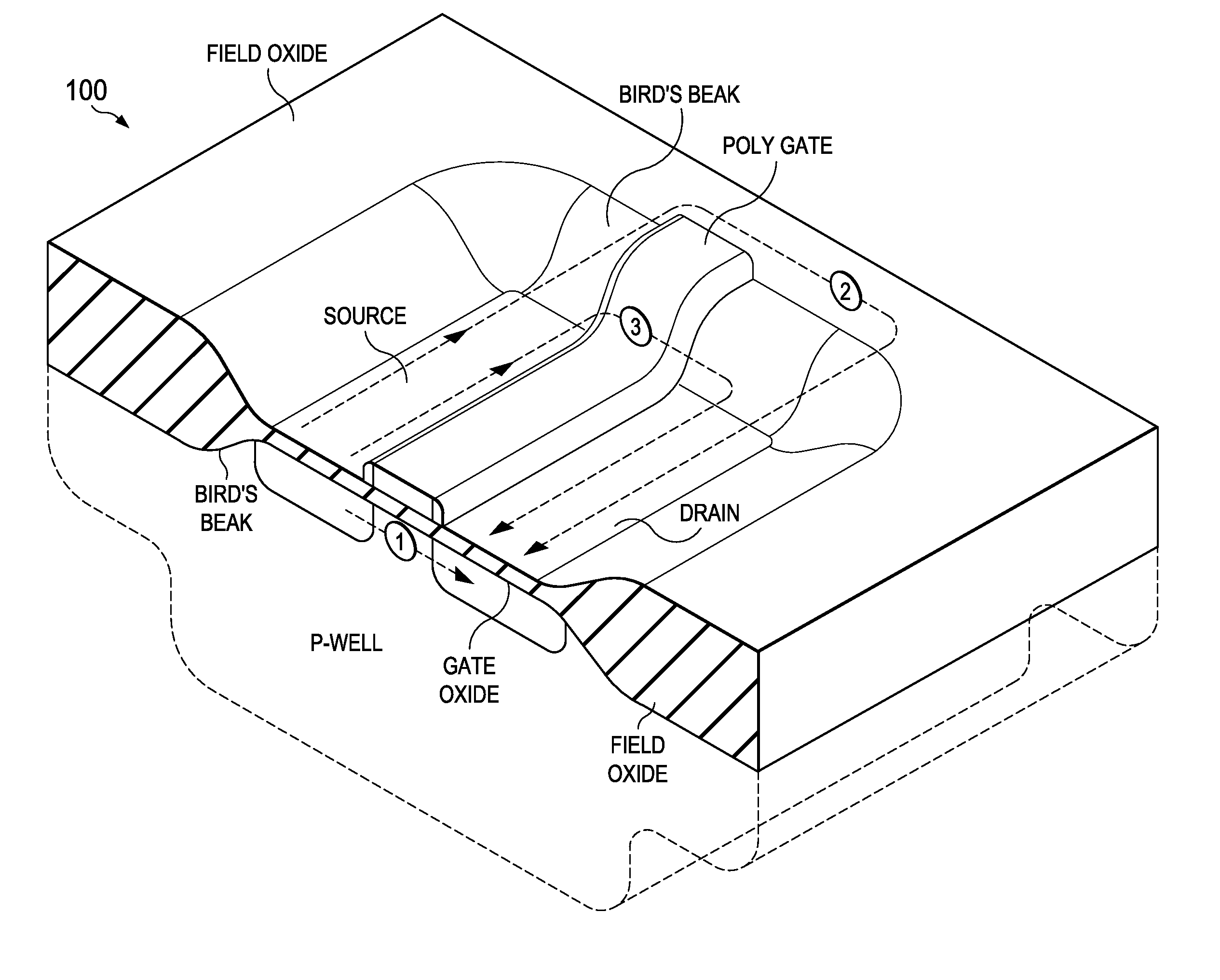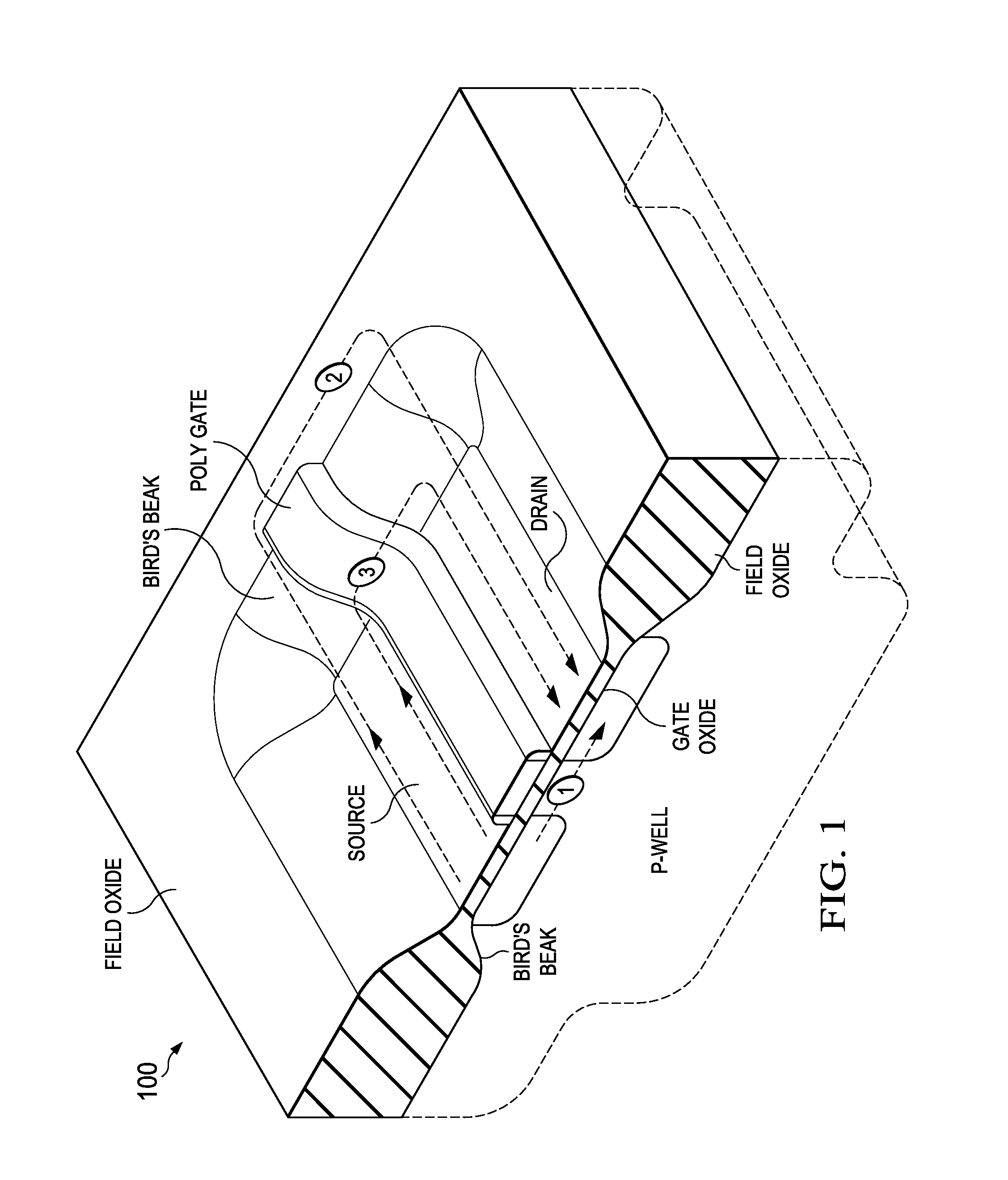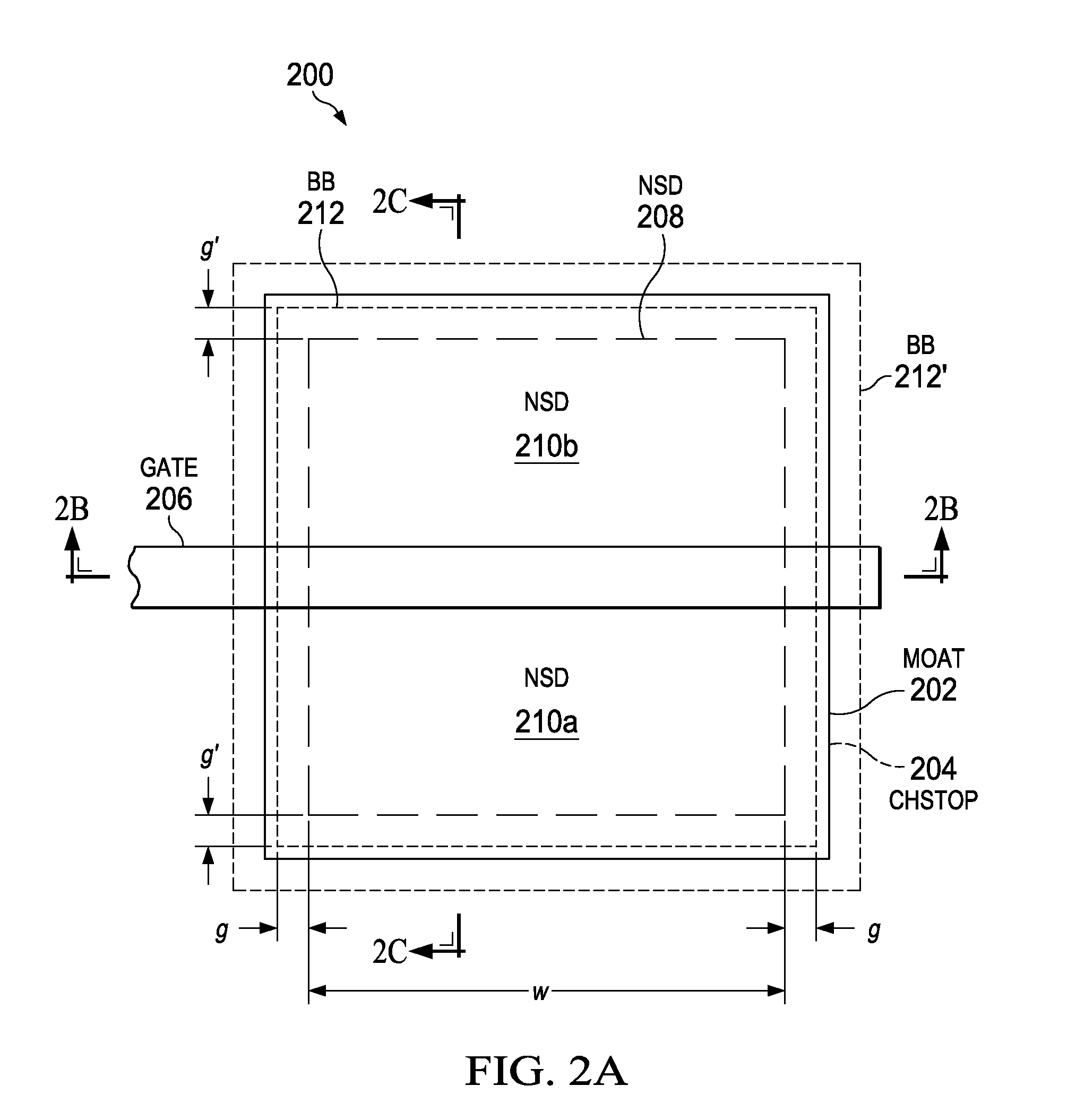Radiation hardened mos devices and methods of fabrication
a technology of mos circuits and hardening methods, applied in the direction of semiconductor devices, electrical apparatus, transistors, etc., can solve the problems of unintended active parasitic device turning, mos circuits formed using a locos process are not tolerant of ionizing radiation, and trapped charge and interface states, etc., to improve the radiation hardness of the bird's beak region, reduce radiation-induced leakage, and high breakdown voltage
- Summary
- Abstract
- Description
- Claims
- Application Information
AI Technical Summary
Benefits of technology
Problems solved by technology
Method used
Image
Examples
Embodiment Construction
[0026]While the making and using of various embodiments of the present invention are discussed in detail below, it should be appreciated that the present invention provides many applicable inventive concepts that can be embodied in a wide variety of specific contexts. The specific embodiments discussed herein are merely illustrative of specific ways to make and use the invention and do not delimit the scope of the invention.
[0027]Referring to FIG. 1, there is shown a cross-sectioned isometric view of a typical NMOS transistor device 100 which can be part of an integrated circuit having multiple such transistors such as an NMOS device, a CMOS device (the PMOS transistor not being shown), or a BiCMOS device (which would additionally include bipolar junction transistors. In the illustrated device, the NMOS transistor is formed in a “p-well” which is a lightly doped p-type region formed within a silicon substrate. Alternatively, an entire top layer several micrometers thick or more of t...
PUM
 Login to View More
Login to View More Abstract
Description
Claims
Application Information
 Login to View More
Login to View More - R&D
- Intellectual Property
- Life Sciences
- Materials
- Tech Scout
- Unparalleled Data Quality
- Higher Quality Content
- 60% Fewer Hallucinations
Browse by: Latest US Patents, China's latest patents, Technical Efficacy Thesaurus, Application Domain, Technology Topic, Popular Technical Reports.
© 2025 PatSnap. All rights reserved.Legal|Privacy policy|Modern Slavery Act Transparency Statement|Sitemap|About US| Contact US: help@patsnap.com



